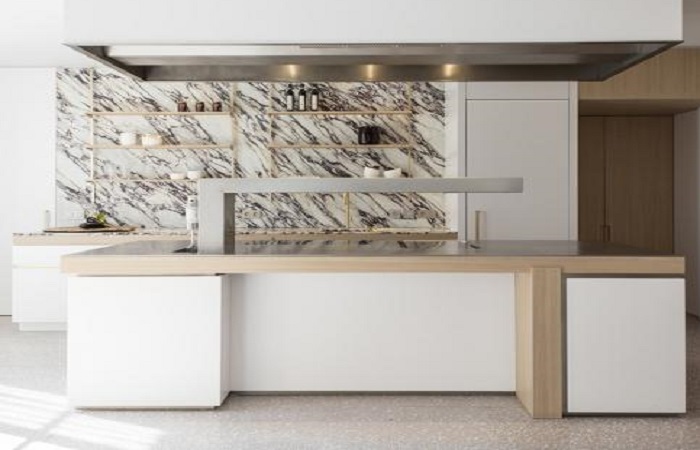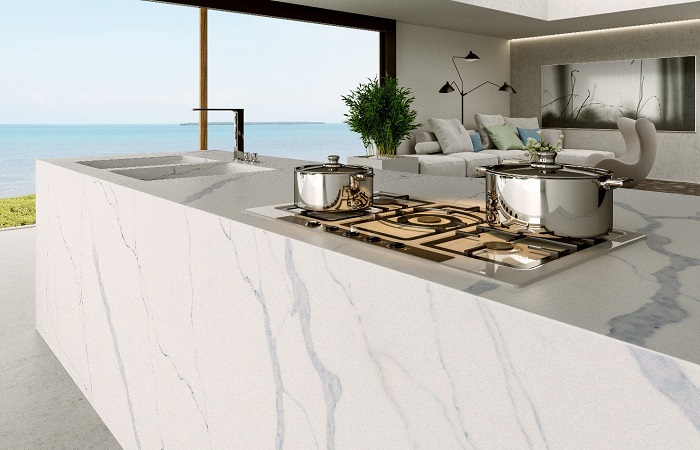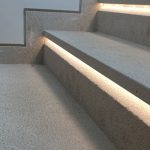Marble Coloring: a New Process

Marble Coloring: a New Process
Marble coloring is a new process. The coloring of marble has been practiced a long time, but heretofore its results have not been altogether satisfactory. Let’s take a quick review on this new topic.
Difficulties of Marble Coloring
It has always been considered a difficult process, and the piece of marble to be colored required great care in its selection, that it might be free from spots or veins. Heat, to open the pores of the stone so as to prepare the stone to receive the colors, has been considered essential. It is true that many of the colors used would strike into the texture of marble while cold, but they would not sink to a desirable depth and the color remained upon the surface.
Colors from Animals, Vegetables and Mineral Kingdoms
The colors required and the vehicles employed to convey them to the stone have been numerous and various. Horses or dogs urine with lime and potash, lye from wood ashes, alcohol, oily liquors, spirits of turpentine, and wine which have given some of the best results. The coloring matters used have been drawn from the animal, vegetable, and mineral kingdoms. Among them maybe enumerated, extracts of saffron, buckthorn berries, alkanet root, dragons blood, logwood, cochineal, gamboge, vermillion and etc.
Marble Coloring Secret
The art of marble coloring has been generally kept a secret by those who have achieved the greatest success in it. Yet, dyeing marble can be done. Also, as mentioned earlier, it is important to heat the marble prior to applying the stain or dye. Heating the marble is done to open the pores of the marble so the dye more easily absorbs and seeps deeper into the stone.

Is Lighting Marble Possible?
Marble is solid through and through and so cannot be lightened, however you could cover it with a lighter material but not likely to be the best to do.
How to Change the Color of Marble
- Clean the marble thoroughly and allow it to dry.
- Pour the gel coat into a container.
- Add tint to the gel coat.
- Add catalyst, using the amount recommended by the manufacturer.
- Spread the gel coat across the surface using a brush or roller.
- Clean your tools with acetone.
- Wait for the gel coat to dry.
Final Statement
An effort has been made in this process to imitate the means by which the valuable colored building stones naturally receive their color. No attempt is made to produce a given pattern, or to imitate any particular effect. The general tone of the color is produced and the variations of the tints are determined by the structure of the stone itself. In this way the effects are all natural.
To learn more about us, click here.
Send your price quotes directly to our WhatsApp through this Link: https://wa.link/ord5k8
Sources
www.scientificamerican.com/article/coloring-of-marble-and-other-buildi/
findanyanswer.com/can-you-change-the-color-of-marble-tile
- Back To Articles
- changing marble color, colored marble, coloring marble stone, Colors from Animals, Difficulties of Marble Coloring, dyed marble, dying marble stone, engineered marble, Fake Marble, How to Change the Color of Marble, Is Lighting Marble Possible?, marble coloring, marble dying, unnatural marble, Vegetables and Mineral Kingdoms
Article
Natural Stone Applications
- 22 December 2022
Iranian Stones Introduction According to Source and Quarry
- 21 December 2022
Technical Stone Introduction and Quarrying Procedures
- 21 December 2022
Categories
- blog757
- news1
- Specialized articles756













